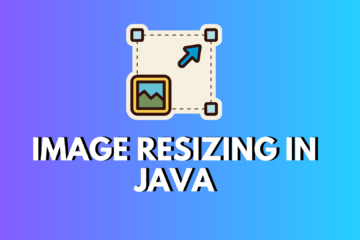
Table of Contents
Introduction to Morse Code Translator
Hello there! Are you ready to explore the fascinating world of Morse code and Java? Well, you’re in luck! This blog has the top-notch Java source code for a Morse Code Translator in 2024. Trust me, it’s going to be an amazing experience.
Have you ever wanted to decipher secret codes or send mysterious messages? With this project, you can do exactly that. You’ll learn how to convert regular text into dots and dashes, and vice versa. It’s like being a modern-day codebreaker, but with even cooler technology.
Why This Project is Awesome
- Hands-On Learning: You’ll have the opportunity to play around with strings, arrays, and simple algorithms. It’s like a playground for your coding skills.
- Fun Factor: Who doesn’t enjoy a bit of mystery? Translating secret messages is incredibly fun and engaging.
- Skill Enhancement: It’s not just fun, it’s also a fantastic way to improve your Java skills. Along the way, you’ll pick up some clever tricks.
What You’ll Gain
- Mastery of Strings and Arrays: You’ll become a pro at handling text, from the basics to advanced techniques.
- Algorithmic Thinking: Simple yet powerful. You’ll learn how to break down problems and solve them step by step.
- Java Proficiency: Get comfortable with Java, one of the most popular programming languages. It’s a valuable skill to have.
So, grab your laptop and let’s start coding. Together, we’re going to create something incredible. Let’s transform those mundane texts into fascinating Morse code messages and have a blast while doing it. Ready, set, code! 🚀
Stay tuned for more exciting content coming your way…
Setting Up the Project
First, you need to set up a project structure. This project will include a command-line interface for simplicity, and focus on translating text to Morse code and vice versa.
Project Structure
MorseCodeTranslator/
├── src/
│ ├── model/
│ │ ├── MorseCode.java
│ ├── service/
│ │ ├── MorseCodeService.java
│ ├── ui/
│ │ ├── MainUI.java
│ ├── util/
│ │ ├── MorseCodeUtil.java
│ ├── Main.java
└── resources/
├── morse_code_mapping.txtCode Implementation
1. MorseCode.java
Model to represent Morse Code mappings.
package model;
public class MorseCode {
private char character;
private String code;
public MorseCode(char character, String code) {
this.character = character;
this.code = code;
}
public char getCharacter() {
return character;
}
public void setCharacter(char character) {
this.character = character;
}
public String getCode() {
return code;
}
public void setCode(String code) {
this.code = code;
}
}2. MorseCodeService.java
Service to handle translation logic.
package service;
import model.MorseCode;
import util.MorseCodeUtil;
import java.util.HashMap;
import java.util.Map;
public class MorseCodeService {
private Map<Character, String> charToMorseMap;
private Map<String, Character> morseToCharMap;
public MorseCodeService() {
charToMorseMap = MorseCodeUtil.loadMorseCodeMappings();
morseToCharMap = new HashMap<>();
for (Map.Entry<Character, String> entry : charToMorseMap.entrySet()) {
morseToCharMap.put(entry.getValue(), entry.getKey());
}
}
public String textToMorse(String text) {
StringBuilder morseCode = new StringBuilder();
for (char c : text.toUpperCase().toCharArray()) {
if (charToMorseMap.containsKey(c)) {
morseCode.append(charToMorseMap.get(c)).append(" ");
} else {
morseCode.append(" ");
}
}
return morseCode.toString().trim();
}
public String morseToText(String morse) {
StringBuilder text = new StringBuilder();
String[] morseChars = morse.split(" ");
for (String morseChar : morseChars) {
if (morseToCharMap.containsKey(morseChar)) {
text.append(morseToCharMap.get(morseChar));
} else {
text.append(" ");
}
}
return text.toString();
}
}3. MorseCodeUtil.java
Utility class to load Morse Code mappings.
package util;
import java.io.BufferedReader;
import java.io.IOException;
import java.io.InputStream;
import java.io.InputStreamReader;
import java.util.HashMap;
import java.util.Map;
public class MorseCodeUtil {
private static final String MORSE_CODE_FILE = "/resources/morse_code_mapping.txt";
public static Map<Character, String> loadMorseCodeMappings() {
Map<Character, String> morseCodeMap = new HashMap<>();
try (InputStream is = MorseCodeUtil.class.getResourceAsStream(MORSE_CODE_FILE);
BufferedReader br = new BufferedReader(new InputStreamReader(is))) {
String line;
while ((line = br.readLine()) != null) {
String[] parts = line.split(" ");
if (parts.length == 2) {
char character = parts[0].charAt(0);
String morseCode = parts[1];
morseCodeMap.put(character, morseCode);
}
}
} catch (IOException e) {
e.printStackTrace();
}
return morseCodeMap;
}
}4. MainUI.java
Command-line UI to interact with the user.
package ui;
import service.MorseCodeService;
import java.util.Scanner;
public class MainUI {
private MorseCodeService morseCodeService;
public MainUI() {
morseCodeService = new MorseCodeService();
}
public void start() {
Scanner scanner = new Scanner(System.in);
while (true) {
System.out.println("Morse Code Translator");
System.out.println("1. Text to Morse Code");
System.out.println("2. Morse Code to Text");
System.out.println("3. Exit");
System.out.print("Choose an option: ");
int choice = scanner.nextInt();
scanner.nextLine(); // Consume newline
switch (choice) {
case 1:
System.out.print("Enter text: ");
String text = scanner.nextLine();
System.out.println("Morse Code: " + morseCodeService.textToMorse(text));
break;
case 2:
System.out.print("Enter Morse Code: ");
String morse = scanner.nextLine();
System.out.println("Text: " + morseCodeService.morseToText(morse));
break;
case 3:
System.out.println("Exiting...");
return;
default:
System.out.println("Invalid option. Try again.");
}
}
}
}5. Main.java
Entry point to launch the application.
package main;
import ui.MainUI;
public class Main {
public static void main(String[] args) {
new MainUI().start();
}
}6. morse_code_mapping.txt
Resource file containing Morse Code mappings.
A .-
B -...
C -.-.
D -..
E .
F ..-.
G --.
H ....
I ..
J .---
K -.-
L .-..
M --
N -.
O ---
P .--.
Q --.-
R .-.
S ...
T -
U ..-
V ...-
W .--
X -..-
Y -.--
Z --..
0 -----
1 .----
2 ..---
3 ...--
4 ....-
5 .....
6 -....
7 --...
8 ---..
9 ----.Running the Application
Compile and run the application:
javac -d bin src/main/Main.java
java -cp bin main.MainThis setup provides a complete Morse Code Translator in Java, using a structured approach similar to the Library Management System example. You can expand it with additional features and improvements as needed.
What is Morse code in Java?
Morse code in Java refers to a programmatic implementation where text is encoded into Morse code or decoded from Morse code back into text using the Java programming language. Morse code is a method used in telecommunication to encode text characters as sequences of dots (.) and dashes (-), which represent the different letters, numerals, and punctuation of a given text.
How to Implement Morse Code in Java
Implementing Morse code in Java involves creating a program that can convert between text and Morse code. Here’s a basic outline of how this can be achieved:
1. Create a Mapping
First, you need a mapping between each character and its Morse code representation. This can be done using a HashMap or similar data structure in Java.
import java.util.HashMap;
import java.util.Map;
public class MorseCodeTranslator {
private static final Map<Character, String> textToMorse = new HashMap<>();
private static final Map<String, Character> morseToText = new HashMap<>();
static {
textToMorse.put('A', ".-");
textToMorse.put('B', "-...");
// Add all other letters and digits
// Fill the morseToText map using textToMorse
for (Map.Entry<Character, String> entry : textToMorse.entrySet()) {
morseToText.put(entry.getValue(), entry.getKey());
}
}
}java projects
project java
project for java
project in java
projects in java
java projects for beginners
java projects beginner
projects for java beginners
beginner projects for java
projects in java for beginners
java beginners projects
projects for beginners in java
2. Encode Text to Morse Code
Create a method to convert text to Morse code using the mapping.
public String encodeToMorse(String text) {
StringBuilder morse = new StringBuilder();
for (char c : text.toUpperCase().toCharArray()) {
String morseCode = textToMorse.get(c);
if (morseCode != null) {
morse.append(morseCode).append(" ");
} else {
morse.append(" "); // For spaces between words
}
}
return morse.toString().trim();
}3. Decode Morse Code to Text
Create a method to convert Morse code back to text.
public String decodeFromMorse(String morse) {
StringBuilder text = new StringBuilder();
String[] morseWords = morse.split(" "); // Morse words separated by 3 spaces
for (String morseWord : morseWords) {
String[] morseChars = morseWord.split(" ");
for (String morseChar : morseChars) {
Character textChar = morseToText.get(morseChar);
if (textChar != null) {
text.append(textChar);
}
}
text.append(" "); // Space between words
}
return text.toString().trim();
}4. Test the Implementation
Test your Morse code translator with some sample text.
public static void main(String[] args) {
MorseCodeTranslator translator = new MorseCodeTranslator();
String text = "HELLO WORLD";
String morse = translator.encodeToMorse(text);
System.out.println("Text to Morse: " + morse);
String decodedText = translator.decodeFromMorse(morse);
System.out.println("Morse to Text: " + decodedText);
}Mapping text characters to their Morse code equivalents and vice versa is the essence of Morse code in Java. By utilizing straightforward data structures and methods, you can effortlessly develop a Morse code translator in Java.
This not only enhances your comprehension of Morse code but also hones your Java programming abilities. Enjoy coding!
What is Morse code translator?
A Morse code translator is a tool or software that converts text into Morse code and vice versa. Morse code is a system of encoding textual information using sequences of dots (.) and dashes (-) to represent letters, numerals, and punctuation.
A Morse code translator can be implemented in various programming languages, including Java, to automate the process of encoding and decoding messages.
Key Features of a Morse Code Translator
- Text to Morse Code Conversion:
- Input: Plain text (e.g., “HELLO”).
- Output: Morse code (e.g., “…. . .-.. .-.. —“).
- Morse Code to Text Conversion:
- Input: Morse code (e.g., “…. . .-.. .-.. —“).
- Output: Plain text (e.g., “HELLO”).
How It Works
1. Mapping Characters:
A Morse code translator relies on a predefined mapping of characters to their Morse code equivalents. For example:
- A -> .-
- B -> -…
- C -> -.-.
- 1 -> .—-
- 2 -> ..—
2. Encoding Process:
To convert text to Morse code, the translator:
- Takes each character from the input text.
- Finds the corresponding Morse code using the mapping.
- Concatenates the Morse code sequences with spaces in between.
3. Decoding Process:
To convert Morse code back to text, the translator:
- Splits the input Morse code into individual code sequences (e.g., separated by spaces).
- Uses the reverse mapping to find the corresponding characters.
- Combines the characters to form the output text.
Example in Java
Here’s a simple example of a Morse code translator in Java:
import java.util.HashMap;
import java.util.Map;
public class MorseCodeTranslator {
private static final Map<Character, String> textToMorse = new HashMap<>();
private static final Map<String, Character> morseToText = new HashMap<>();
static {
textToMorse.put('A', ".-");
textToMorse.put('B', "-...");
textToMorse.put('C', "-.-.");
// Add other letters and digits
// Fill the morseToText map using textToMorse
for (Map.Entry<Character, String> entry : textToMorse.entrySet()) {
morseToText.put(entry.getValue(), entry.getKey());
}
}
public String encodeToMorse(String text) {
StringBuilder morse = new StringBuilder();
for (char c : text.toUpperCase().toCharArray()) {
String morseCode = textToMorse.get(c);
if (morseCode != null) {
morse.append(morseCode).append(" ");
} else {
morse.append(" ");
}
}
return morse.toString().trim();
}
public String decodeFromMorse(String morse) {
StringBuilder text = new StringBuilder();
String[] morseWords = morse.split(" "); // Morse words separated by 3 spaces
for (String morseWord : morseWords) {
String[] morseChars = morseWord.split(" ");
for (String morseChar : morseChars) {
Character textChar = morseToText.get(morseChar);
if (textChar != null) {
text.append(textChar);
}
}
text.append(" ");
}
return text.toString().trim();
}
public static void main(String[] args) {
MorseCodeTranslator translator = new MorseCodeTranslator();
String text = "HELLO WORLD";
String morse = translator.encodeToMorse(text);
System.out.println("Text to Morse: " + morse);
String decodedText = translator.decodeFromMorse(morse);
System.out.println("Morse to Text: " + decodedText);
}
}A Morse code translator is a handy tool for encoding and decoding messages using Morse Code Translator. If you’re a Java developer looking to implement one or just curious about Morse code, it’s important to grasp the fundamentals of character mapping and conversion processes.
What is Morse code encoding?
Morse Code Translator, created by Samuel Morse and Alfred Vail in the early 19th century, completely transformed long-distance communication. This ingenious encoding system assigns unique combinations of dots and dashes to each letter, number, and punctuation mark, making it simple yet effective.
By utilizing the frequency of characters in the English language, Morse Code Translator allows for efficient message transmission through telegraph wires, radio waves, and light signals. Its adaptability to different communication technologies is what makes Morse code a crucial part of telecommunications history.
java projects for resume reddit
class naming conventions java
java project file structure
java project structure best practices
best java projects for resume
good java projects for resume
java project ideas reddit
beginner java projects reddit
The encoding process involves converting text characters into sequences of dots and dashes. For instance, the letter “A” is represented by “.-“, while “B” is represented by “-…”.
Each letter is separated by spaces, and words are distinguished by longer pauses. This systematic encoding enables skilled operators to transmit messages quickly and accurately, even in challenging circumstances.
Morse Code Translator‘s ability to withstand noise and interference, along with its concise representation of information, has made it indispensable in various fields, from military communications to amateur radio enthusiasts worldwide.
Despite the advancements in digital communication, Morse code remains relevant today. Its simplicity and reliability make it the preferred method for emergency signaling, where clear and concise communication is crucial.
Additionally, Morse code proficiency continues to be a valuable skill for amateur radio operators, who rely on it to communicate across vast distances, often in unfavorable conditions.
The enduring legacy of Morse code is a testament to its timeless appeal and enduring usefulness in the ever-changing world of telecommunications.
java projects for learners
java projects to learn
java projects reddit
java project reddit
java program ideas
java file structure
simple java projects for beginners
loom java
project loom release date
java portfolio projects
java panama
java directory structure
java folder structure
java resume projects
How do I make a Morse code translator mobile app?
java projects for resume reddit
class naming conventions java
java project file structure
java project structure best practices
best java projects for resume
Morse code translator mobile app Flutter Code
Here’s a simple example of a Morse code translator mobile app implemented using Flutter, a popular cross-platform framework:
morse code translator
translate morse code
morse code decoder
import 'package:flutter/material.dart';
void main() {
runApp(MorseCodeApp());
}
class MorseCodeApp extends StatelessWidget {
@override
Widget build(BuildContext context) {
return MaterialApp(
title: 'Morse Code Translator',
theme: ThemeData(
primarySwatch: Colors.blue,
),
home: MorseCodeScreen(),
);
}
}
class MorseCodeScreen extends StatefulWidget {
@override
_MorseCodeScreenState createState() => _MorseCodeScreenState();
}
class _MorseCodeScreenState extends State<MorseCodeScreen> {
final TextEditingController _textEditingController = TextEditingController();
String _translatedText = '';
@override
Widget build(BuildContext context) {
return Scaffold(
appBar: AppBar(
title: Text('Morse Code Translator'),
),
body: Padding(
padding: EdgeInsets.all(16.0),
child: Column(
crossAxisAlignment: CrossAxisAlignment.stretch,
children: [
TextField(
controller: _textEditingController,
decoration: InputDecoration(
labelText: 'Enter Text',
),
),
SizedBox(height: 16.0),
ElevatedButton(
onPressed: _translateToMorse,
child: Text('Translate to Morse Code'),
),
SizedBox(height: 16.0),
Text(
'Translated Morse Code:',
style: TextStyle(fontSize: 16.0, fontWeight: FontWeight.bold),
),
SizedBox(height: 8.0),
Text(_translatedText),
],
),
),
);
}
void _translateToMorse() {
String inputText = _textEditingController.text.toUpperCase();
String translatedText = '';
Map<String, String> morseCodeMap = {
'A': '.-', 'B': '-...', 'C': '-.-.', 'D': '-..', 'E': '.',
'F': '..-.', 'G': '--.', 'H': '....', 'I': '..', 'J': '.---',
'K': '-.-', 'L': '.-..', 'M': '--', 'N': '-.', 'O': '---',
'P': '.--.', 'Q': '--.-', 'R': '.-.', 'S': '...', 'T': '-',
'U': '..-', 'V': '...-', 'W': '.--', 'X': '-..-', 'Y': '-.--',
'Z': '--..', '0': '-----', '1': '.----', '2': '..---', '3': '...--',
'4': '....-', '5': '.....', '6': '-....', '7': '--...', '8': '---..',
'9': '----.', ' ': '/',
};
for (int i = 0; i < inputText.length; i++) {
String char = inputText[i];
if (morseCodeMap.containsKey(char)) {
translatedText += morseCodeMap[char] + ' ';
}
}
setState(() {
_translatedText = translatedText.trim();
});
}
}english to morse code
morse code to english
morse translator
read morse code
words in morse code
This code creates a basic Flutter application that includes a text input box for users to enter text that will be converted into Morse Code Translator.
By clicking the “Morse Code Translator” button, the inputted text will be translated into Morse code based on a set mapping of characters to Morse code symbols. The converted Morse code will appear below the text input box.
good java projects for resume
java project ideas reddit
beginner java projects reddit
java side projects
project valhalla java
what is valhalla project
Explanation
Let’s go through the code step by step:
- Import Statements: We bring in the necessary packages from the Flutter framework to construct our mobile app.
- Main Function: The
main()function serves as the starting point of the application. It initiates the app by callingrunApp()and designates theMorseCodeAppas the root widget. - MorseCodeApp Class: This widget,
MorseCodeApp, is stateless and represents the entire application. It configures the app’s title, theme, and sets theMorseCodeScreenwidget as the home screen. - MorseCodeScreen Class: Representing the main screen of the app, this stateful widget,
MorseCodeScreen, manages the state of the text input field and the translated Morse code text. - build() Method: The
build()method constructs the UI of the screen using aScaffoldwidget as the primary layout. It includes a text input field, a translate button, and a text display area for the translated Morse code. - Text Input Field: Users can input text to be translated into Morse code using a
TextFieldwidget. It is controlled by aTextEditingController. - Translate Button: When pressed, an
ElevatedButtoninitiates the translation process. It invokes the_translateToMorse()method. - Translated Text Display: Below the input field, a
Textwidget showcases the translated Morse code text. - _translateToMorse() Method: This method handles the translation of the input text into Morse code. It goes through each character in the input text, retrieves its corresponding Morse code symbol from the
morseCodeMap, and constructs the translated Morse code text. - Morse Code Mapping: The
morseCodeMapis aMapthat holds the mapping of characters to Morse code symbols, covering letters from A to Z, numbers from 0 to 9, and space. - setState(): Upon completing the translation,
setState()is invoked to update the state of the_translatedText, prompting a UI rebuild with the translated Morse code displayed.
tap code
morse code to text
morse code sheet
morse decoder
morse code number translator
morse code audio decoder
Conclusion to Morse Code Translator
Congratulations! You did it! You are now officially a master of Morse code and a whiz at Java. 🎉 By completing this Morse Code Translator project, you have transformed plain text into dots and dashes and deciphered the code back into words. How amazing is that?
Let’s take a moment to reflect on what you have accomplished:
- Explored Strings and Arrays: You handled text like a pro, converting letters into Morse code and vice versa.
- Tackled Algorithms: You broke down problems and found solutions, making your code efficient and impressive.
- Boosted Your Java Skills: You got hands-on experience with one of the top programming languages and aced it.
This project was not just about having fun. It was a valuable learning journey. You have acquired skills that will stay with you and enable you to take on bigger and more exciting projects in the future.
java project panama
java package structure best practice
java project ideas for resume
java loom release date
java coding project ideas
java developer projects
java project hierarchy
java projects to put on resume
reddit java projects
java portfolio project ideas
github projects java
So, what’s next? Perhaps you want to add more features, such as translating entire sentences or creating a cool GUI for your translator. The possibilities are endless. Keep experimenting, keep coding, and most importantly, keep enjoying yourself.
tap morse code
morse to english
morse code translator app
morse code translator copy and paste
morse code translator camera
Thank you for joining me on this adventure. Until we meet again, happy coding! 🚀✨.
Projects in Java for Beginners
So, you’re a newbie in the Java game, huh? No worries, we got you covered! These projects are like the training wheels of coding. They’ll help you get the hang of Java while having a blast along the way.
java projects for resume reddit
class naming conventions java
java project file structure
java project structure best practices
best java projects for resume
good java projects for resume
java project ideas reddit
beginner java projects reddit
Java Projects for Beginners
- Chatbot: Let’s explore the captivating realm of chatbots and discover the art of crafting one using Java. This adventure guarantees to be both enlightening and pleasurable. Once you complete this guide, you’ll have your very own chatbot, all set to engage in delightful conversations with you.
- Simple Calculator: Crunching numbers has never been cooler! Build a basic calculator app that can add, subtract, multiply, and divide. It’s a great way to flex those Java muscles and learn about functions and conditional statements.
- Alarm Clock: Sure thing! Need an Alarm Clock for your Java project? Picture this: you have a crucial meeting coming up, and you want to make sure you wake up on time. No worries; Java has your back! In this post, we will discuss three unique ways to develop an alarm clock in Java, each offering a distinct method to ensure you wake up promptly.
Projects in Java
Alright, so you’ve got a bit of experience under your belt and you’re ready to level up your Java game. These projects are a step above beginner level, but they’re still totally doable if you put your mind to it!
Java Projects Beginner
- Library Management System: Time to put your Java skills to the test with this cool project. Build a system that manages books, members, and loans. It’s a great way to dive into databases, GUIs, and more advanced programming concepts.
- E-commerce Platform: Get ready to unleash your inner entrepreneur! Build an e-commerce platform from scratch using Java. You’ll learn about user authentication, product management, shopping carts, and more. It’s like running your own online store!
Beginner Projects for Java
So, you’re still getting the hang of things, huh? No worries, we all start somewhere! These projects are perfect for beginners who want to dip their toes into the wonderful world of Java programming.
Projects for Java Beginners
- Morse Code Translator: Want to learn Java while cracking the code? Build a program that translates text into Morse code and vice versa. It’s a fun way to learn about strings, arrays, and basic algorithms.
- Simple To-Do List: Keep track of your tasks in style with this simple to-do list app. You’ll learn about arrays, loops, and basic file handling as you create a handy tool for staying organized.
project java
project for java
project in java
projects in java
java projects for beginners
java projects beginner
projects for java beginners
beginner projects for java
projects in java for beginners
So, what are you waiting for? Pick a project, fire up your IDE, and let’s get coding! The world of Java projects awaits, and the only limit is your imagination.




0 Comments